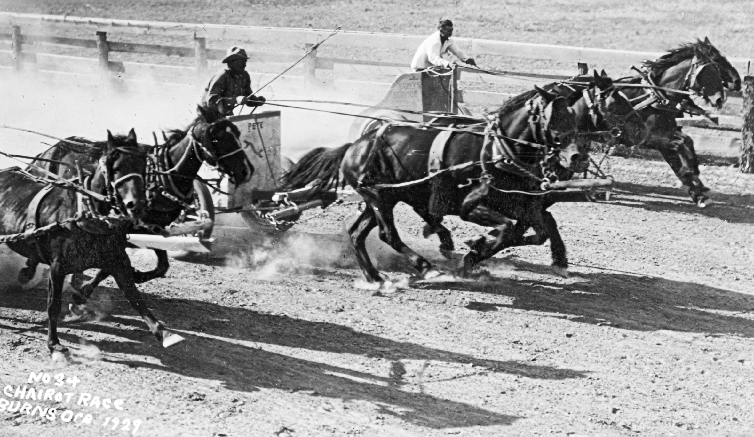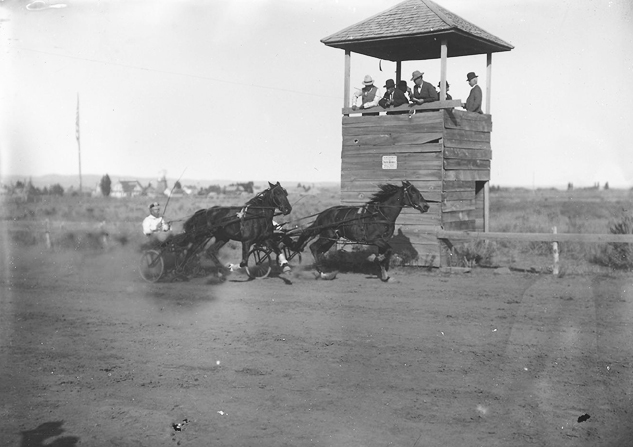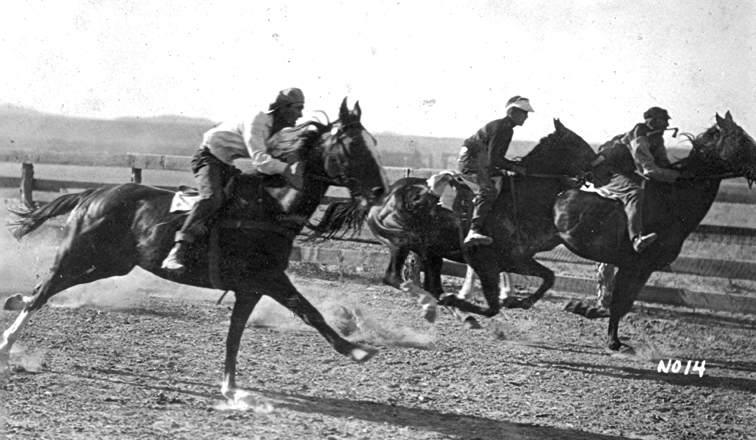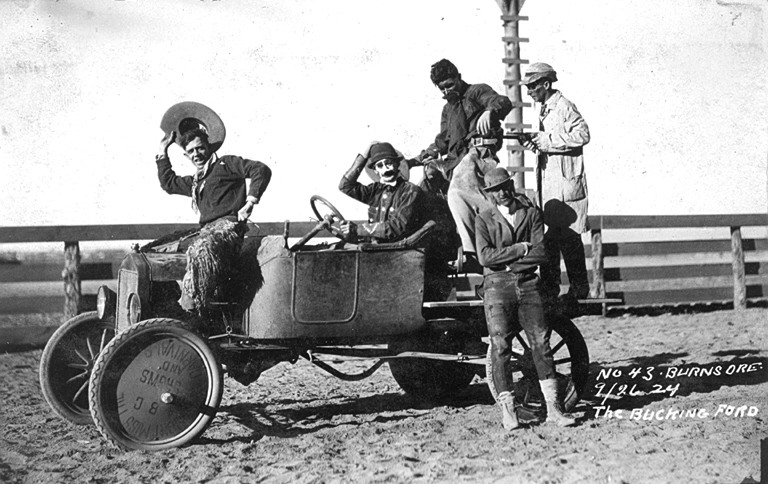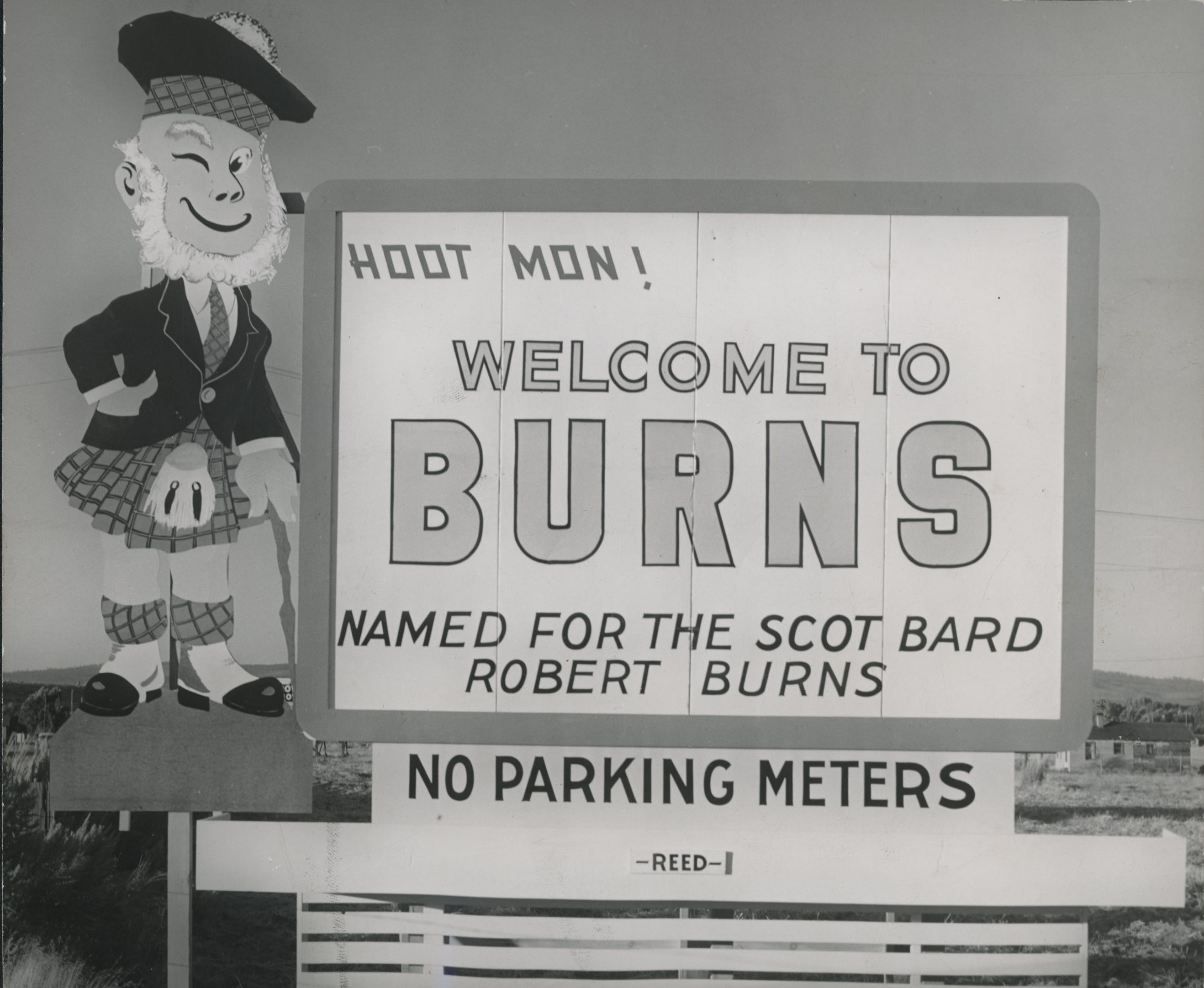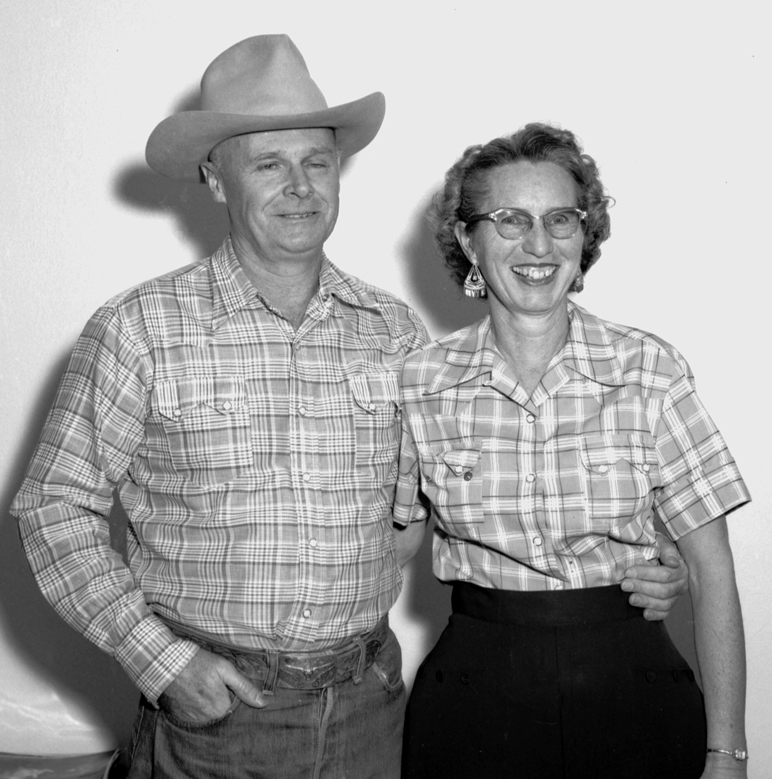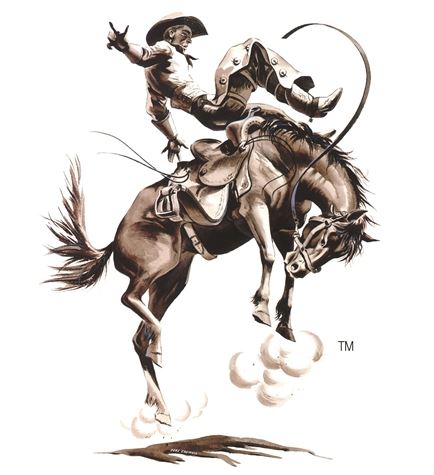The first “fair” in Harney County was a media event. On July 4, 1888, a local newspaper announced, “As no fair is held in this valley for the public exhibition of the growth and excellence of its productions, the Herald proposes to open a column to all producers, farmers, and stockmen, in which to give a written description of all that is worthy of mention.” The same month, local horse racers organized the Jockey Club and announced the opening of a new half-mile racetrack and plans to make the annual races in Burns better than ever. The Herald listed the winning horses and riders and the purses won.
The two events came together in April 1900, when the Harney County Fair Association incorporated, leased land near the Silvies River northeast of Burns, and designed a five-day fair with horse races, a rodeo, and premiums for produce and stock. Ranch rodeos, as they were known, were popular throughout the county, and local cowboys signed on to compete during the September fair. In 1901, premiums included team driving, a dozen heads of cabbage, and ten pounds of butter and cheese.
A few years later, with some buildings taken by fire and the riverside site a haven for mosquitoes, the fair was moved to the Jockey Club’s racetracks on the southern outskirts of Burns. The 1908 fair had a parade, livestock, and garden, cooking, and needlework exhibits. Spectators and participants enjoyed Thoroughbred, Roman chariot, and sulky races. One popular race showcased Paiute Indians racing bareback for a mile in one direction, reversing without stopping, and racing back to the starting point. By 1918, Burns boasted the first sanctioned racetrack in Oregon.
World War I preempted the fair, and for a few years a rodeo organization managed to include some fair and racing activities with their annual Round-Up. A revitalized Harney County Fair Association positioned the first Fair Queen and Court at the head of their 1924 parade. Now called the Harney County Fair, Rodeo, and Race Meet, the event was achieving financial success when the Great Depression hit.
When the State of Oregon established the Oregon Racing Commission and allowed pari-mutuel betting in 1933, racing money made improvements possible, and there was renewed interest in fair activities. Although the fair was interrupted again by World War II, the popularity of the event continued to swell. Over the next seventy-five years, the fair organization and grounds steadily developed to meet the needs of exhibitors, community interests, rodeo competitions, and, of course, racing.
Future Farmers of America (FFA) and 4-H organizations continue to play an important role in the fair, and even young people who live in town manage to raise sheep, hogs, and beef as projects. Ranch families come from as far away as a hundred miles to spend several days at the fair, bringing horses for racing or rodeo events, animals for show, and other premium exhibits.
Many animals bought during the 4-H and FFA fair auctions are donated as food to the Harney County Senior Center and, for over fifty-five years, to the Shriners Hospitals for Children.
According to Fair Manager Don Slone, attendance was approximately 18,000 in 2010. Fair revenues that year (admission and all vendor income) topped $550,000. Community businesses benefit from the influx of families and visitors who spend six days working, exhibiting, and playing at the fair.
-
Chariot Race, 1929.
"Chariot Race" featuring Pete Elmose, left, wearing hat. R.W. Heck, photographer. Photo courtesy Bonnie Smith.
-
![Horses jockey for position during race meet event.]()
Horse Race.
Horses jockey for position during race meet event. Photo courtesy Bonnie Smith.
-
![Contestants run neck and neck past the reviewing stand at the old race track during the Harney County Fair. 1900-1915 ca]()
Sulkey Race.
Contestants run neck and neck past the reviewing stand at the old race track during the Harney County Fair. 1900-1915 ca Photo courtesy Claire McGill Luce Western History Room, Harney County Library.
-
![Rodeo clowns ham it up on the "Bucking Ford," 1924. Harney County Round-up.]()
"Rodeo Clowns".
Rodeo clowns ham it up on the "Bucking Ford," 1924. Harney County Round-up. R.W. Heck, photographer. Photo courtesy Bonnie Smith.
-
![Reed Brothers Rexall Drug automobile float rolls down Broadway Avenue in 1915 c. parade.]()
"Rexall Drug Parade Entry".
Reed Brothers Rexall Drug automobile float rolls down Broadway Avenue in 1915 c. parade. R.W. Heck, photographer. Photo courtesy Claire McGill Luce Western History Room, Harney County Library.
-
![Local Paiute Chief Jimmie Louie rides in 1953 Harney County Fair Parade.]()
Jimmie Louie in Fair Parade, 1953.
Local Paiute Chief Jimmie Louie rides in 1953 Harney County Fair Parade. Ross Johnson Photo Studio. Photo courtesy Harney County Historical Museum.
Related Entries
-
![Burns]()
Burns
Located in Oregon’s High Desert, Burns is the county seat of Harney Cou…
-
![DeVere (1902-1981) and Helen (1907-1989) Helfrich]()
DeVere (1902-1981) and Helen (1907-1989) Helfrich
Known as the Dean of Rodeo Photography, DeVere Helfrich has been descri…
-
![Pendleton Round-Up]()
Pendleton Round-Up
The Pendleton Round-Up began in September 1910 as a frontier exhibition…
-
![Rogue River Roundup]()
Rogue River Roundup
In 1916, Ashland dedicated its much-expanded Lithia Park, a ceremony so…
-
![St. Paul Rodeo]()
St. Paul Rodeo
On July 4, 1936, the Willamette Valley town of St. Paul held its first …
Related Historical Records
Map This on the Oregon History WayFinder
The Oregon History Wayfinder is an interactive map that identifies significant places, people, and events in Oregon history.
Further Reading
"Harney County Fair Gets Its Start in 1900." Harney County Historical Society Newsletter 19:7 (Sep. 1998): 1.
Brimlow, George. Harney County, Oregon and Its Rangeland. Burns, Ore.: Harney County Historical Society, 1980.

